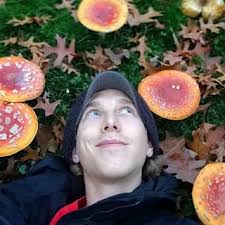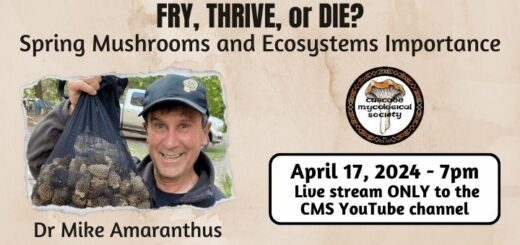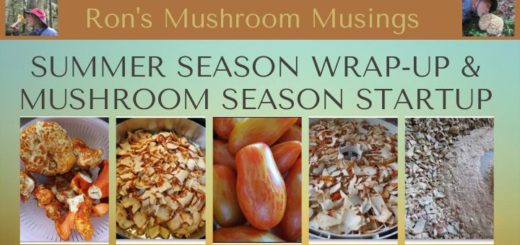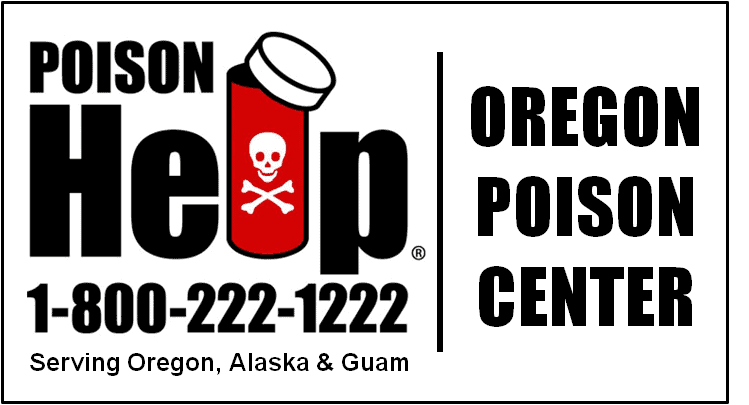CMS Meeting – Feb 19, 2020

- When: Wednesday, February 19, 2020, from 7:00 pm to 9:00 pm
- Where: Amazon Community Center, 2700 Hilyard St, Eugene, Oregon 97405
This event is free and open to the public. There will be a mushroom identification session. Bring what’s in your basket, edible or not, and learn from the experienced members of our community.
Our speaker for February is the 2019 recipient of the Freeman Rowe Educational Scholarship. In this presentation, Richard will discuss some important chemicals made by fungi, how fungi use chemistry in ecological interactions, how “secondary metabolism” has evolved in fungi, and his research on drug discovery and chemical ecology in new and known species of Cordyceps—mushrooms which grow on insects and on other fungi. Below is a summary of the project he applied the $1000 scholarship he received from CMS towards. You can read his entire proposal here.
The objective of the proposed project is the discovery, isolation, structure elucidation, and biological characterization of bioactive secondary metabolites from new Cordyceps s.l. that were not originally included in my thesis work. This research would involve chemical profiling and analysis by LCMS, high-resolution tandem mass spectrometry (LC-HR-MS/MS), which would enable the identification of known SMs and the detection and structure elucidation of new SMs in chemical extracts of new fungal species. Extracts, extract fractions, and pure compounds from these fungi would be screened in a panel of bioassays including antibacterial cell-viability assays conducted by myself with a diverse panel of bacteria, and also functional bioassays which probe cellular processes and cell viability in human cancer cell lines conducted by collaborators in the laboratory of Dr. Jane Ishmael in the College of Pharmacy. The functional aspect of this latter assay involves incubation of test samples with a transgenic cancer cell line, which expresses and secretes a fluorescent protein through a defined cellular pathway, giving a strong fluorescent signal in negative controls. Cells that die, or wherein secretion is inhibited, give lower signal, which provides an effective probe for protein secretion inhibition. Secretory pathways are overactive in various cancers and other disease conditions, and this process represents a potentially effective drug target which has been understudied. Extracts from previous Tolypocladium samples have generated several exciting hits in both the antibacterial and anticancer screens, on which I am currently following up. This involves large scale culture of fungi, and purification by liquid chromatography of active constituents using bioassay-guided fractionation.

About the Speaker
Richard Tehan is originally from upstate, NY. He received a B.S. in chemistry at Utica College, in Utica, NY. He is now in his final year of a medicinal chemistry PhD program at Oregon State University, College of Pharmacy. Richard’s long-term career goal is to be appointed to an academic position where he can continue research on fungi and to teach and train students as well as the public about mycology and chemistry. He is an avid mushroom hunter and photographer, is passionate about fungi and mycology and is a member of several mycological societies.





